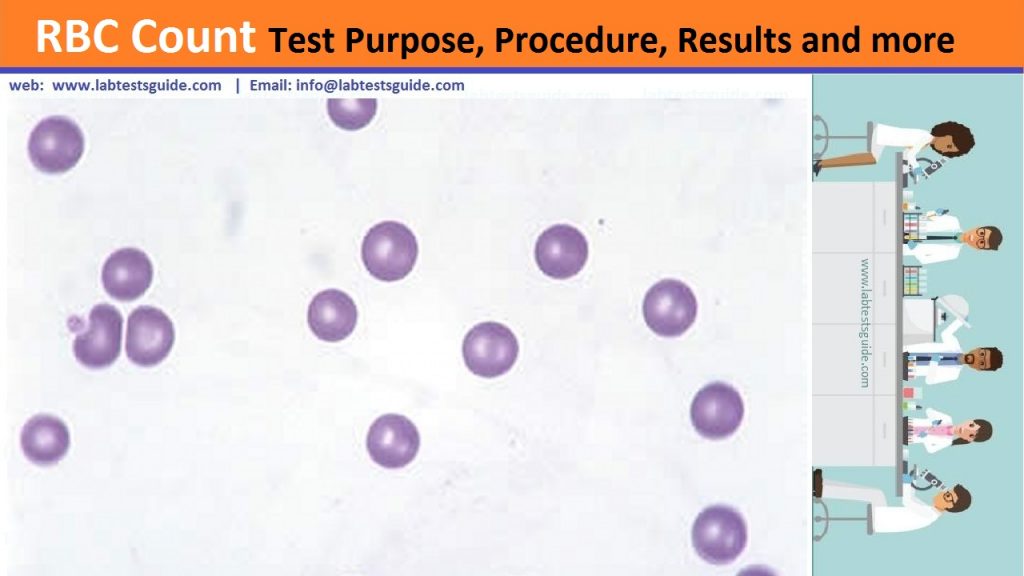
A red blood cell count is a blood test that your doctor uses to find out how many red blood cells (RBCs) you have. It’s also known as an erythrocyte count.
The test is important because RBCs contain hemoglobin, which carries oxygen to your body’s tissues. The number of RBCs you have can affect how much oxygen your tissues receive. Your tissues need oxygen to function.

Also Known As: RBC Count, Erythrocyte Count, Red Count, Erythrocytes
Test Panel: Hemoglobin, Red Blood Cells (RBC), HCT, MCV, MCH, MCHC, Platelets Count, White Blood Cells (WBC), DLC, ESR
Why Get Tested:
- This is an indicator of anemia or Polycythemia.
- It is a routine part of CBC.
- This is repeated in patients with repeated bleeding.
When to Get Tested:
Your doctor may order the test if they suspect you have a condition that affects your RBCs, or if you show symptoms of low blood oxygen. These could include:
- If you have a condition such as anemia
- If you have a condition such as polycythemia
- Bluish discoloration of the skin
- Confusion
- Irritability and restlessness
- Irregular breathing
A CBC test will often be part of a routine physical exam. It can be an indicator of your overall health. It may also be performed before a surgery.
Sample Required:
- The blood sample is taken in EDTA.
- It is stable for 24 hours at 23 °C and 48 hours at 4°C.
Normal value:
| Test Name | Male | Female |
| RBC | 4.5 – 6.5 x 1012 /l | 4.5 – 6.5 x 1012 /l |
Increased RBC count is seen in:
- Primary Erythrocytosis.
- Polycythemia.
- Erythremia (Erythrocytosis).
- Secondary Erythrocytosis.
- vigorous exercise.
- Hemoconcentration.
- High Altitude.
- Chronic obstructive pulmonary disease (COPD).
- Severe dehydration.
- Thalassemia trait.
- Hemoglobinopathies.
- Congenital heart disease.
- Extra-renal tumors.
- Tobacco use.
Decreased RBC count is seen in:
- Anaemias.
- Drugs that cause aplastic anemia.
- G-6 PD deficiency.
- Immune mechanism.
- Malignancy like Hodgkin’s disease, lymphomas.
- Acute and chronic hemorrhage.
- Autoimmune diseases like SLE, and rheumatoid arthritis.
- Chronic infection like subacute endocarditis.
- Myeloproliferative disorders like leukemia and Myeloma.
- Cirrhosis.
- Dietary deficiency of iron, and vit B12.
- Pregnancy.
| Features | Pronormoblast | Normoblast | Reticulocyte | Mature RBC |
| Cell size µm | 14 to 19 | 12 to 17 | 7 to 10 | 7 to 8 |
| Nuclear shape | round | round | absent | absent |
| Nuclear chromatin | reddish-blue | blue purple | absent | absent |
| Nucleoli | 0 to 2 | absent | absent | absent |
| Cytoplasm | dark or royal blue | pink, moderate | clear, gray-blue | pink |
Complete Blood Count Test Panel
- Red blood cells.
- White blood cells.
- Platelet Count
- Hemoglobin
- Hematocrit (HCT)
- RBC indices.
- White cell differential count (DLC) includes.
- Peripheral blood smear study.
Related Articles:
RELATED POSTS
View all

